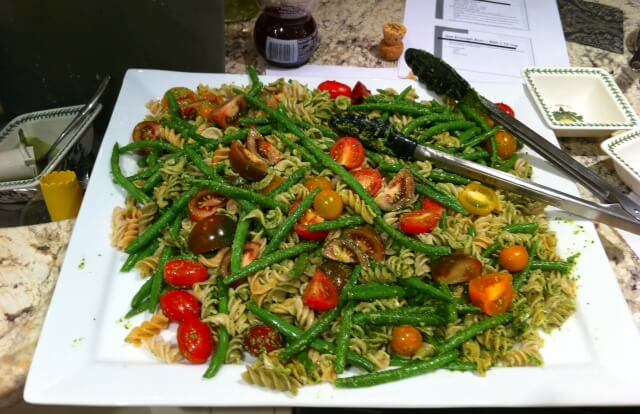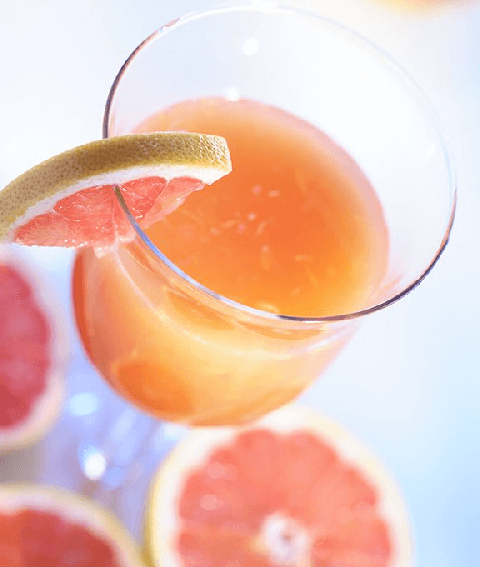 What is a salad?
What is a salad?
That may seem like a silly question but it isn’t. During the summer we often have salad as a main meal which can be very beneficial to our weight loss/management efforts. However, it can also be dangerous if you are not aware of the other foods in the salad. Eating salad does not mean you will lose weight. There are three important steps to remember if you want salad to aid in your weight loss efforts.
Step 1: Eating salad that contains the vegetables from the Vegetable List in The Healthy Options Weight Loss Plan® will certainly take you a step in the right direction. Choose different types of lettuce and add a variety of other greens as well. Remember, that a salad does not contain a lot of fibre. You will need to add fibrous vegetables and some protein to increase your feelings of fullness.
Step 2: Ensure you ‘dress’ the salad correctly. Small quantities of dressing in measured amounts is paramount to your success. A dressing should complement a salad without overpowering its flavour. Experiment with different ingredients to find your favourite healthful combination.
- Gourmet infused oils: sharp and flavourful.
Use sparingly.
- Olive oil: extra virgin varieties are healthiest.
- Canola oil: light, blends well.
- Nut oils: subtle yet distinct. Perfect for simple combinations.
- Balsamic vinegar: aged for an intense, sweet-tart flavour.
- Herb vinegars: quality wine vinegars infused with herbs.
- Fruit vinegars: aromatic; ideal with fruit & summer greens.
- Non-fat yogurt: allows creamy dressings to be healthful.
Step 3: If there are other food groups (i.e. chicken or cheese) in your salad be sure to count them accurately. Extra food groups, as well as extra calories, come from such things as olives, meat, cheese, croutons, pasta, potatoes, creamy dressings, dressings with added sugar, beans, sesame seeds, pine nuts and avocado. There may even be more hidden calories. Be sure to eat with your eyes open and determine what really is in your salad.
Leafy vegetables are different, delicious and downright nutritious. Be sure to add these to summer salads:
- Dandelion Greens – slightly bitter flavour, small pale leaves are better for salads.
- Spinach – hearty flavour.
- Kale – tastes mild and cabbage-like. Kale is as versatile as spinach and cabbage, and a good source of calcium.
- Swiss Chard – mild mannered and is a member of the same family as beets and spinach. Use the large leaves to line salad bowls or mix them with other torn greens in a salad.
- Beet Greens – the leafy part of the familiar beet can be steamed or braised.
- Rapini – pungent vegetable is a favourite in Italian cooking.
- Collard Greens – popular in southern cooking, these greens taste like a cross between a cabbage & kale.
All leafy greens have a high water content, so they wilt easily. Once faded, they’re hard to revive. Buy the freshest, greenest leaves. Don’t buy yellow or discoloured greens. For best texture and flavour, use greens as soon as possible after purchasing them. Store them unwashed in the refrigerator; lightly wrapped in damp paper towels inside a plastic bag that has been punctured in a few places to allow air circulation. If they’re quite fresh, this can hold the greens, with an occasional change of paper towels, three to five days. Always wash greens thoroughly (even the pre-washed). Hidden dirt often clings to the undersides of leaves.
Recipe – Gluten-free, Dairy-Free Basil Pesto
Makes 2 1/2 cups
From The Dairy-free & Gluten-free Kitchen Cookbook by Denise Jardine
Pesto is easy to make and is a delicious addition to pasta, pizza, soups, and hummus. Adding lemon juice (or powdered vitamin C) will help the pesto retain its bright green colour.
Ingredients
2 cups/500 ml whole fresh basil leaves, stemmed and tightly packed
1/3 cup/75 ml pine nuts or walnut pieces (I prefer pine nuts)
1/4 cup/ 50 ml olive oil
3 cloves garlic
1/2 tsp sea salt
1 tsp/5 ml lemon juice, optional
Method
- In a food processor or high-speed blender, combine the basil, nuts, olive oil, garlic, salt, and lemon juice.
- Process the mixture, scraping down the sides with a rubber spatula as needed, until the pesto is smooth and creamy, about 3 minutes.
- Add desired amount to the pasta and toss.
Note: This mixture can be frozen in 1/4 cup/50 ml servings or in ice cube trays (make sure to cover the top of the ice pesto with plastic wrap before freezing. Then empty store frozen cubes into a freezer bag and freeze for up 6 months.




